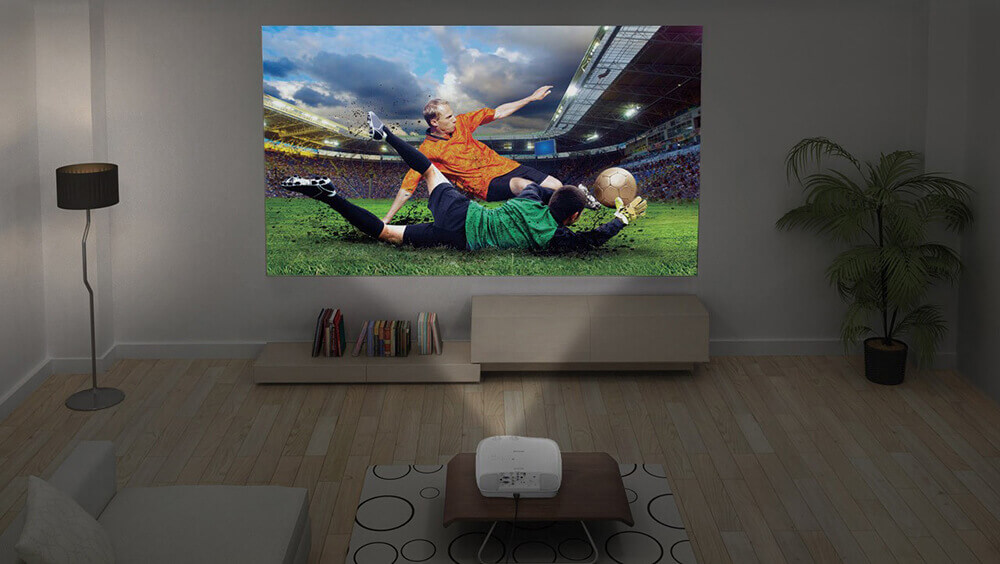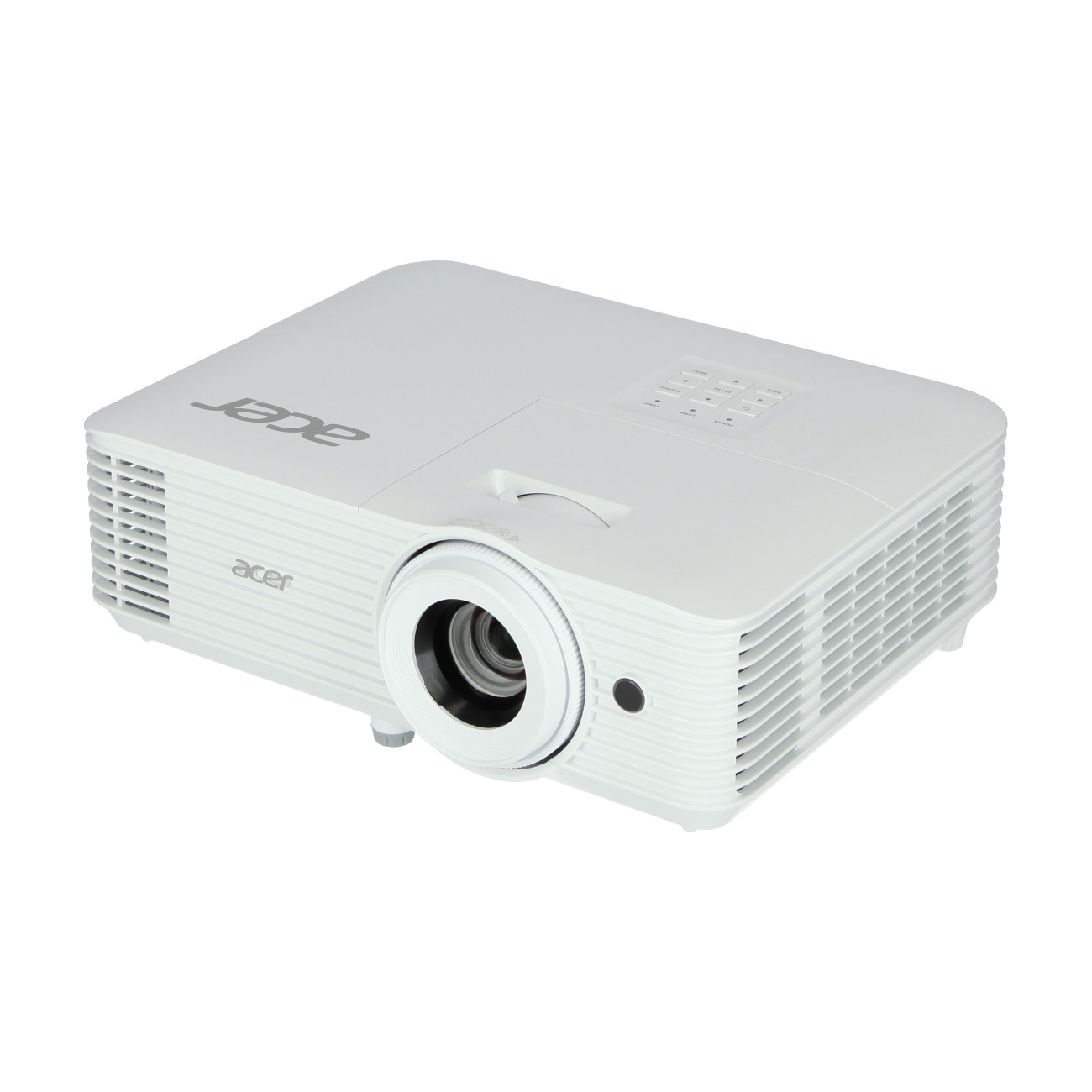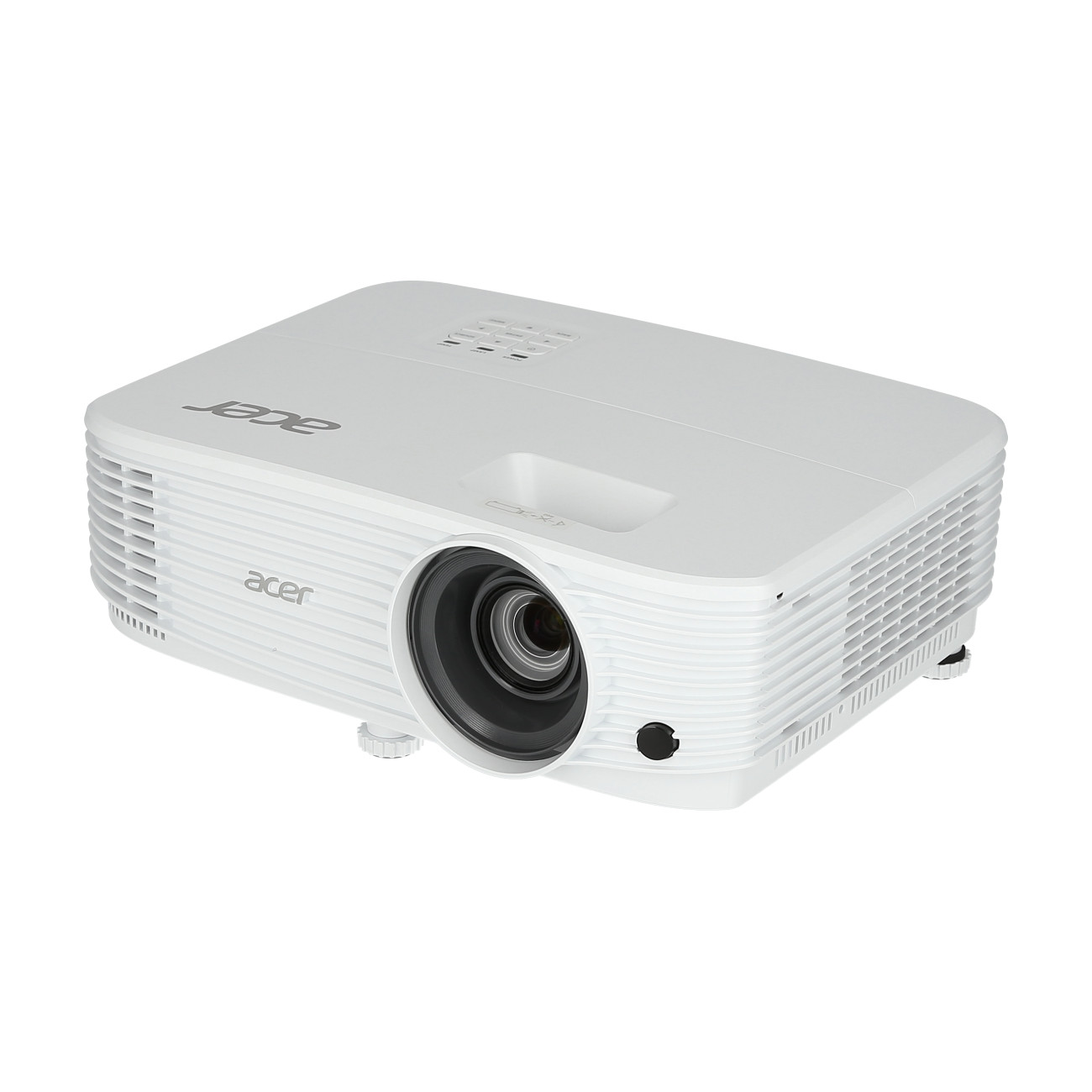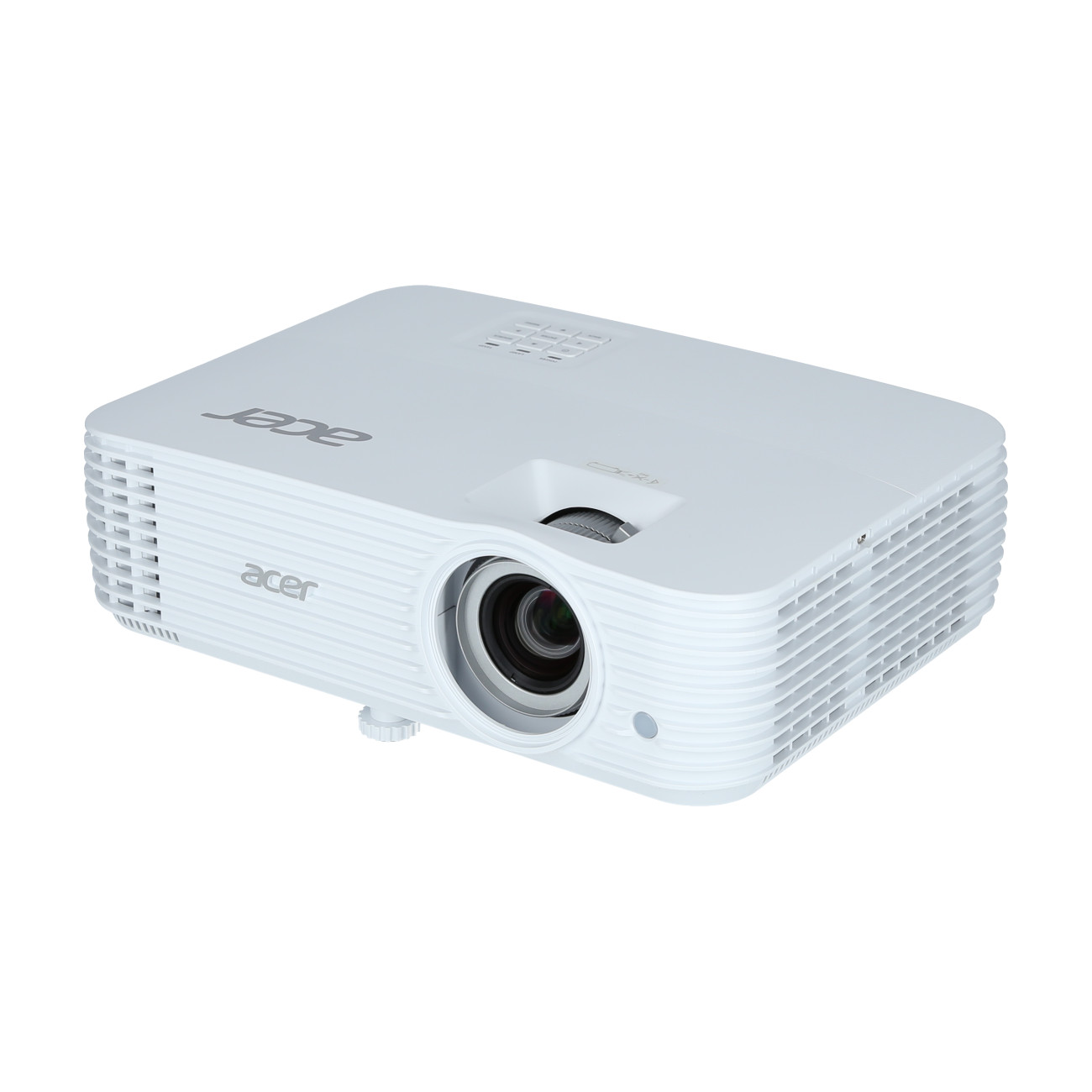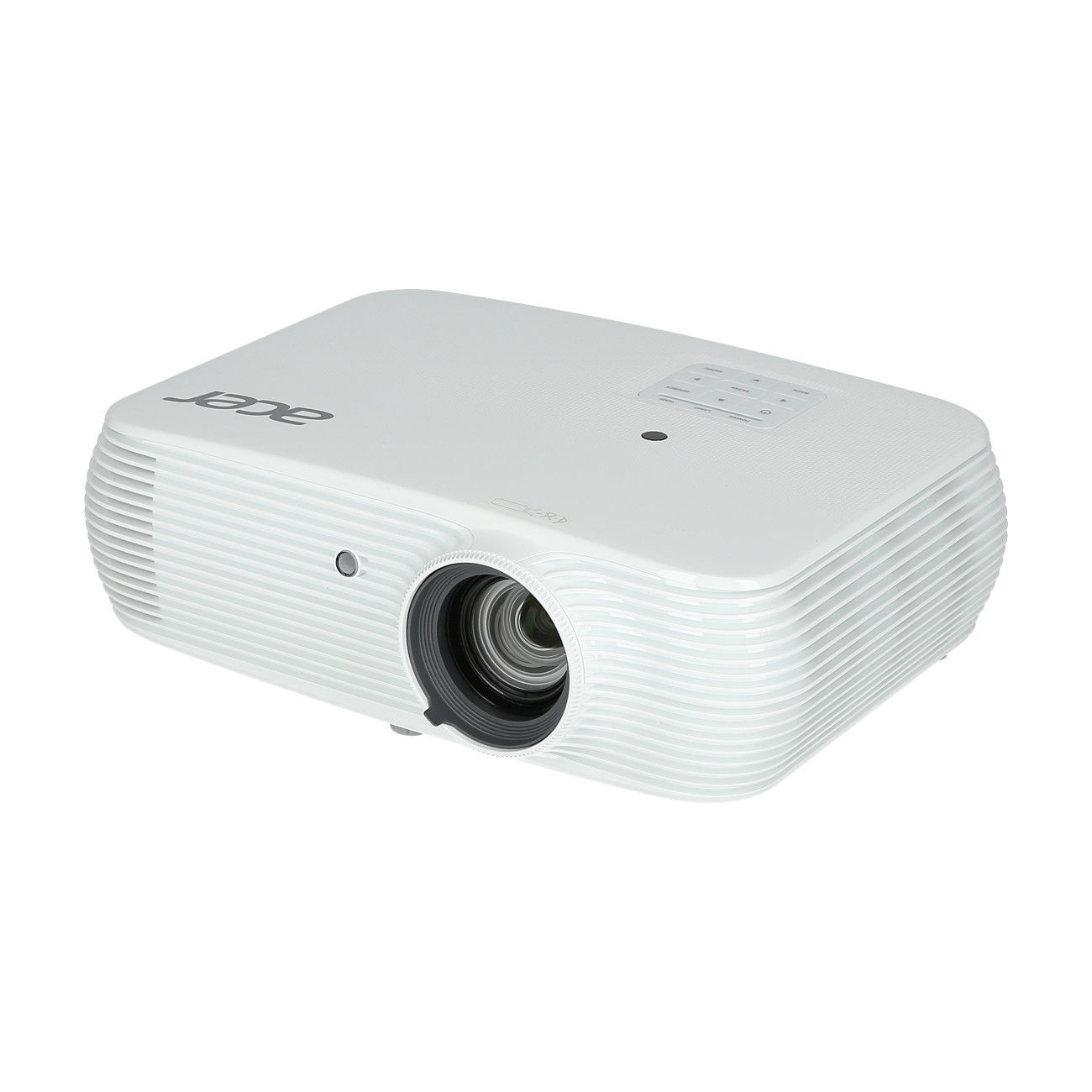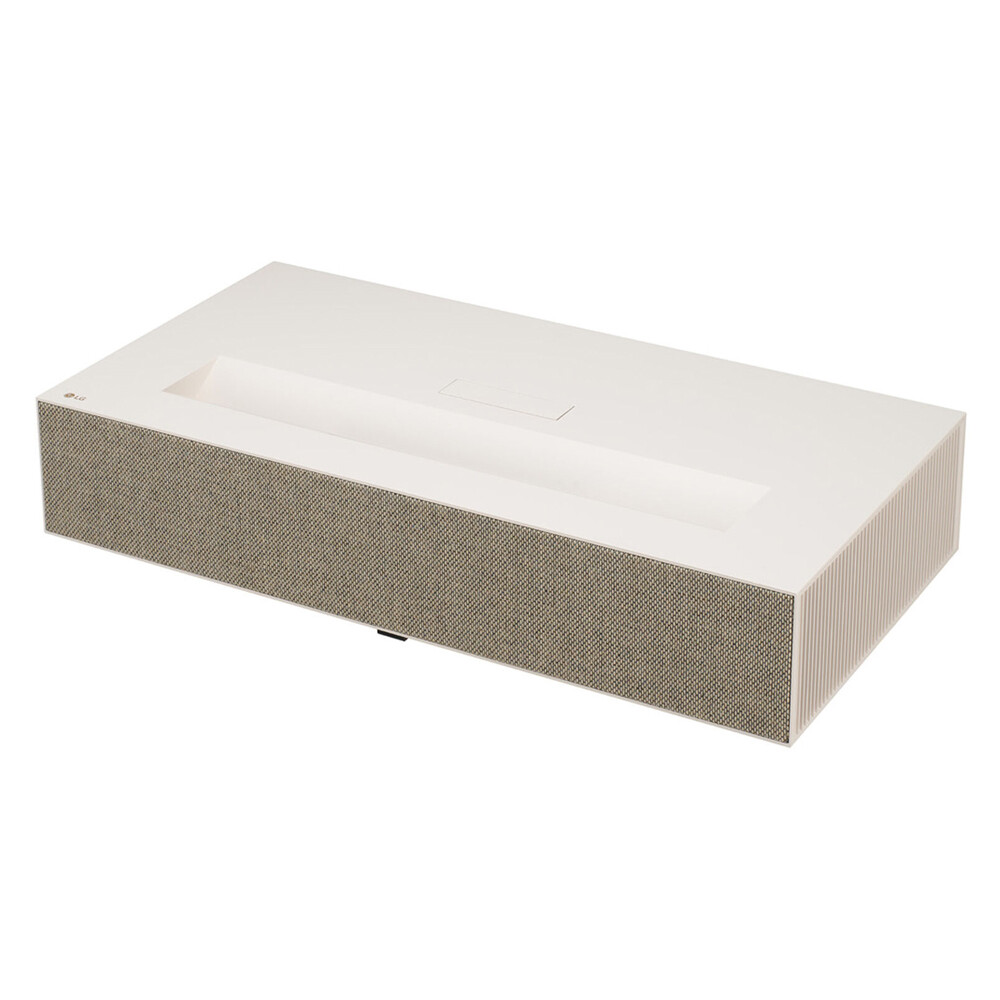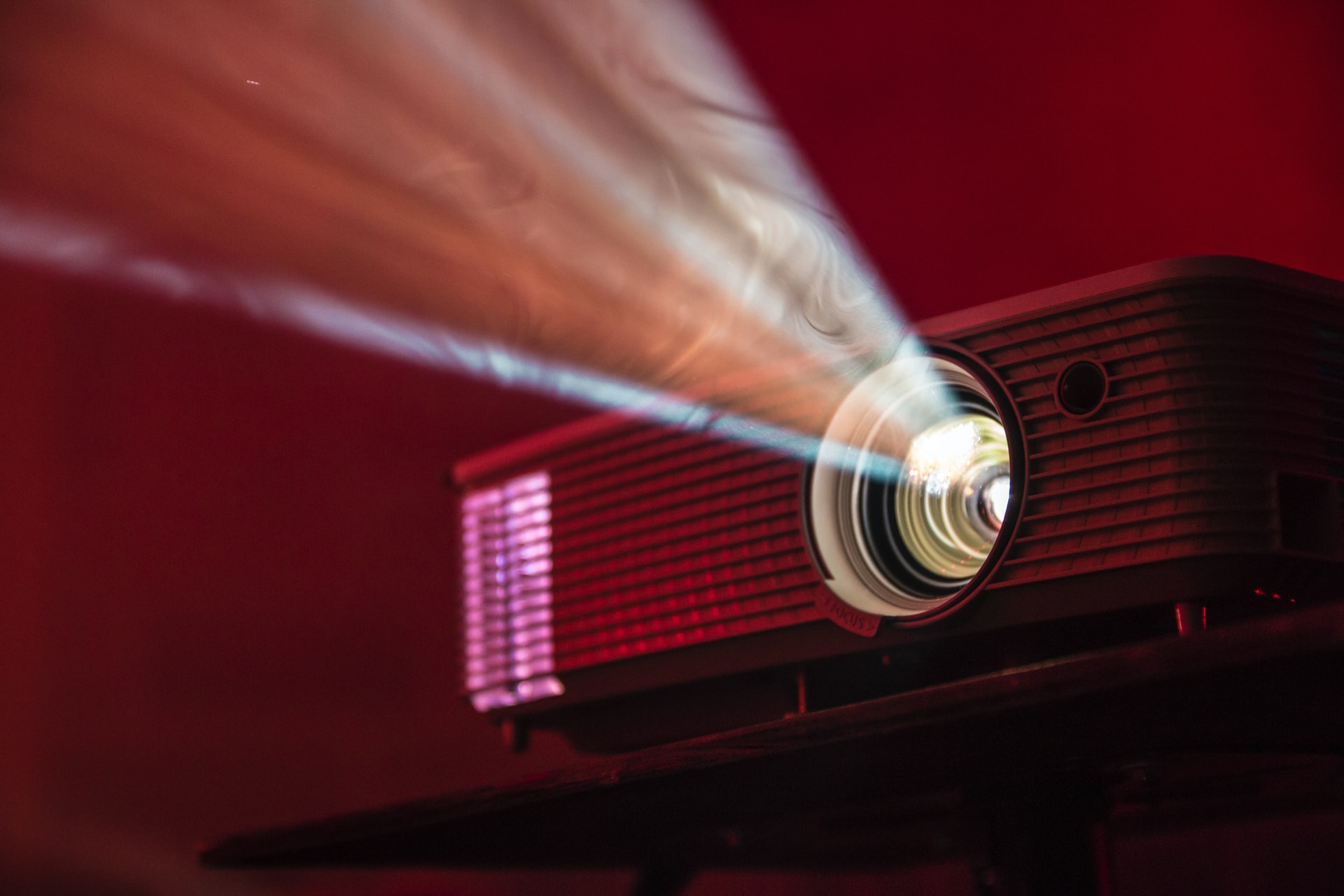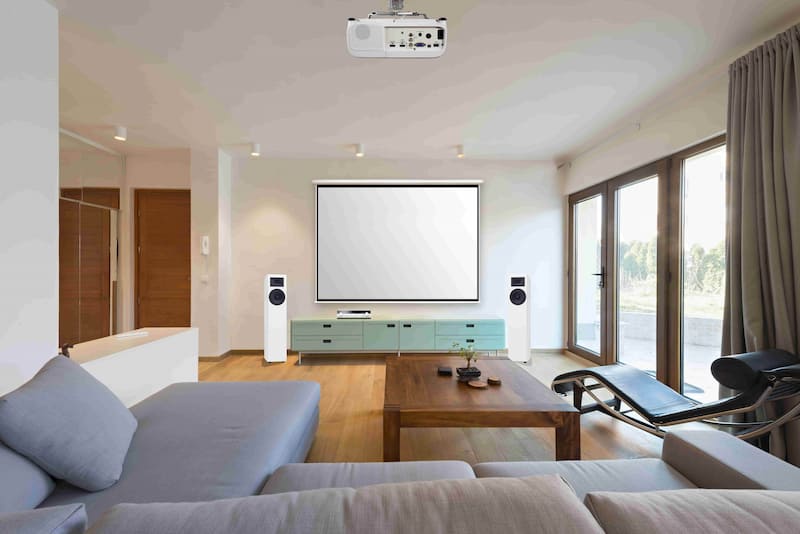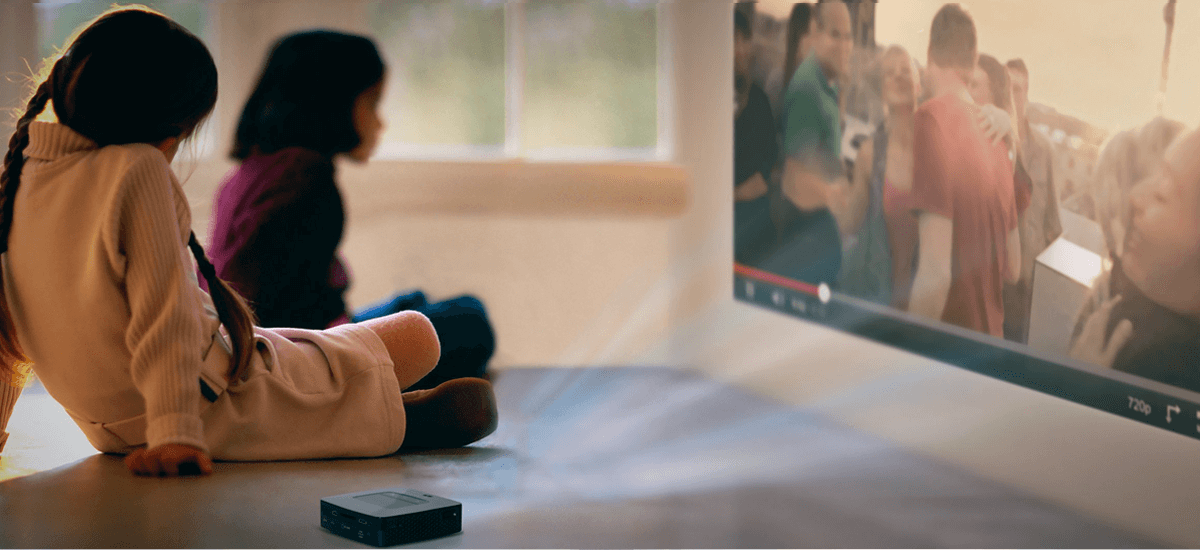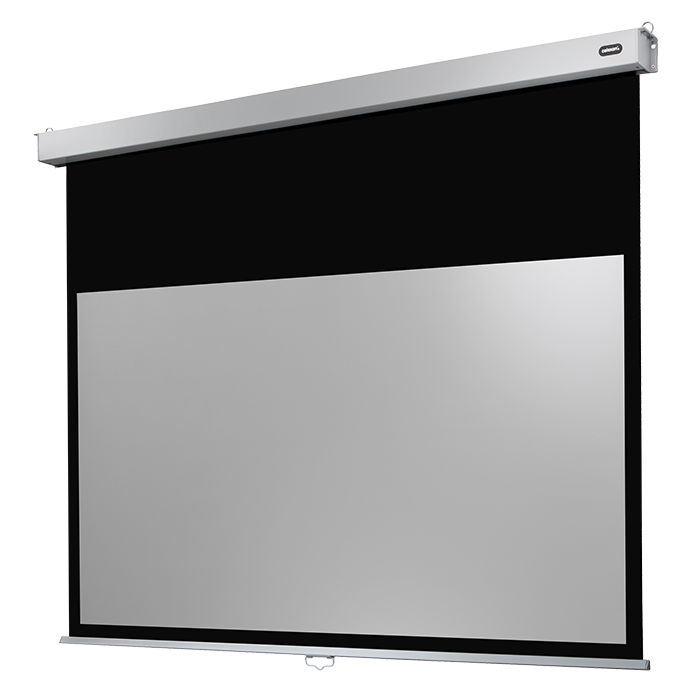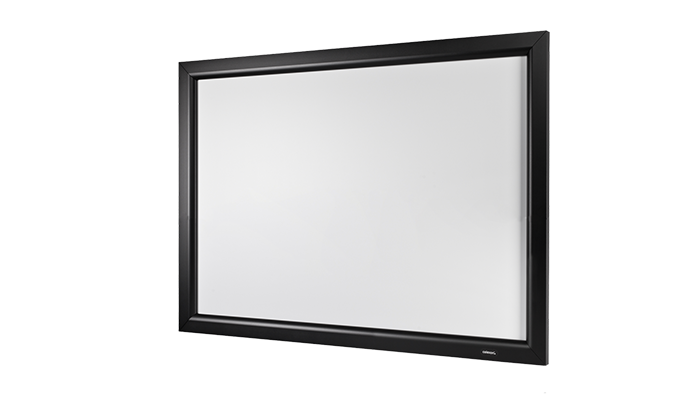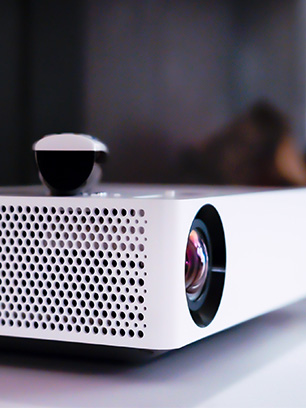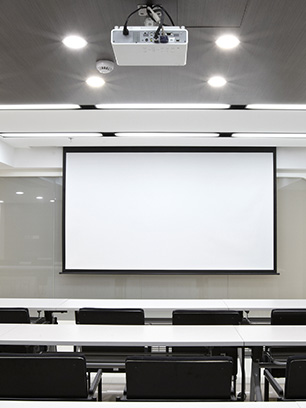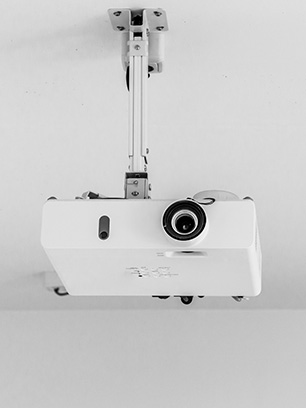Projection distance calculator
- The choice of the right projector for a certain distance depends on the so-called "throw ratio" of the projector. The throw ratio is the relationship between the distance from the projector to the screen (throw distance) and the image width. For example, if a projector has a throw ratio of 1:1, it can project an image 2 metres wide from a distance of 2 metres. A projector with a throw ratio of 2:1 can project an image 1 metre wide from the same distance.
- The size of the beamer projection screen depends on several factors, including viewing distance, beamer resolution and personal comfort. A common rule is that the screen diagonal should be about one third of the viewing distance. So, for example, if you are sitting about 3 metres from the screen, a screen with a diagonal of about 1 metre might be appropriate. However, it is important to note that this will vary depending on individual preferences and the specific characteristics of your room.
- The ideal sitting distance from a screen depends on its size. As a rule of thumb, the viewing distance should be about 1.5 to 2 times the diagonal of the screen. This ensures that you can see the entire image without moving your head and that you are close enough to see all the details that the resolution of your projector offers.
- Image size is generally understood to be the diagonal of the projected image, i.e. the line from one corner of the screen to the opposite corner. It is often expressed in inches or centimetres. The calculation of the image size for a projector depends on the throw ratio and the distance between the projector and the screen. It is important to choose the right picture size to ensure optimal picture quality and a comfortable viewing experience. You can easily determine the appropriate image size with our distance calculator.


